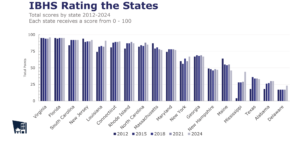High-yielding energy partnerships have lured billions in capital from investors in the past few years and the returns have often matched or beaten expectations.
But as riskier kinds of businesses adopt the Master Limited Partnership (MLP) structure, and as interest rates rise, investors are getting a wake-up call about some of the scary stuff lurking in the sector.
One of the little-noticed problems is that the partnerships have almost none of the shareholder protections that regular companies offer – meaning that if something goes wrong investors have little power if they want to change management or the board, and also have little recourse to legal action.
The MLP world has grown dramatically over the past ten years, surging from investments of just $2 billion in 1994 to $445 billion now, according to Wells Fargo. In some businesses they are big players – for example more than 10 percent of U.S. oil and gas pipelines are owned by MLPs.
Cash-generating energy infrastructure companies form the partnerships, which are listed on U.S. stock exchanges, because the structures are not taxed at the federal level, lowering their cost of capital.
Investors, or unitholders, like them because they mostly provide higher payouts than dividend-paying companies, and the returns have been beating yields available on Treasuries and most corporate bonds.
But unlike publicly traded corporations, the partnerships lack rigorous governance standards. They have few directors who are independent of the controlling shareholders and top executives and there are often no votes on executive pay, dilutive stock sales, or sometimes even mergers. General partners, who control limited partners, hold the power. That means minority investors have little chance to make their voices heard.
“If you are an investor who wants to be able to vote for the members of the board and wants to vote on shareholder proposals, then you shouldn’t own an MLP whose general partner is controlled by a sponsor,” said John Goodgame, an attorney with Akin Gump Strauss Hauer & Feld who advises on MLP transactions. “You’re not going to have any say in governance.”
Filing lawsuits also may not help. A review by the law firm Latham & Watkins of 10 big MLP disputes showed courts usually sided against minorities, with judges ruling that partnership agreements gave broad protections to general partners.
That wouldn’t be so bad if the risks in the sector weren’t increasing. A range of businesses—including ones that lack the predictable cash flow of pipeline companies—are now adopting the structure, and they are often far from simple entities to track.
Sand and Cemeteries
MLP investors say the sector has gotten so complex that less sophisticated mom and pop investors should take a pass.
Up to 80 percent of MLP buyers are individuals, according to the National Association of Publicly Traded Partnerships, though hedge funds and institutions increasingly buy them.
“The average MLP is riskier than an MLP was 5 or 10 years ago, the spectrum of risk from high to low is a lot wider than it was 10 years ago,” said Quinn Kiley, a managing director at Advisory Research Inc., the ninth-largest MLP investor.
The partnerships have expanded to include refining assets, a company that manufactures sand used in hydraulic fracturing, as well as exploration and production assets that do not have the same guaranteed cash flow as pipelines.
Even StoneMor Partners LP, a company that owns and operates cemeteries and funeral homes, is an MLP although it formed years before the recent surge.
Diverging Interests?
MLPs are controlled by general partners who own as little as 2 percent of the partnership and can take home as much as 50 percent of the partnership’s distributions. Limited partners, who provide capital and have the bulk of ownership, have little or no say in operations.
Because of the “unique attributes” of limited partnerships, the New York Stock Exchange does not require them to have a majority of independent directors, a corporate governance or nominating committee, or a compensation committee composed of independent directors.
Still, there are exceptions. Magellan Midstream Partners LP allows unitholders to vote on its directors and the general partner of Enterprise Products Partners LP has a majority of outside directors on its board.
While the payout structure of MLPs is in place to align the economic interests of general and limited partners, analysts and investors say those can diverge.
“A GP can have debt and need distributions to service that debt, or have other assets that become challenged. That’s not necessarily in alignment with the limited partners’ interest,” said Gretchen French of Moody’s Investors Service.
Some have questioned structures like those of pipeline company Kinder Morgan, under which general partner Kinder Morgan Inc controls several master limited partnerships.
Kinder Morgan bought the assets that became El Paso Pipeline Partners in May 2012. But El Paso has recently underperformed its sister partnership, Kinder Morgan Energy Partners LP. Over the past 6 months, El Paso shares have dropped more than 25 percent, compared with a 4 percent drop at KMP.
Rate Increases and Returns
Overall, MLPs have generated strong returns. The Alerian MLP Index, which includes 50 partnerships, has delivered a yield of nearly 6 percent over the last decade, well above the Barclays US Aggregate Total Return Bond index yield of 2.5 percent and a 2 percent yield for the Standard & Poor’s 500 as of the end of last year.
Units have also outperformed stocks. In the last five years, the Alerian MLP index climbed 138 percent, compared with an 86 percent gain in the S&P 500.
But rising interest rates may reduce the appeal of MLPs.
If rates do climb, investors may prefer U.S. treasury bills with similar yields to MLPs “because an MLP is in general estimation riskier than a T-bill,” said Akin Gump’s Goodgame.
Even supposedly safe investments like pipelines and storage facilities have had their problems. Boardwalk Pipeline Partners, a $3.3 billion midstream partnership controlled by Loews Corp slashed its distribution nearly 80 percent this February on weakening cash flows and a heavy debt load.
The move sent its units down over 40 percent.
“In the 7 or 8 years that we’ve been doing this, I don’t think we’ve misjudged a management team as badly as we’ve misjudged this one, or what we thought was probably a pretty good general partner,” said Dan Tutcher, a principal at Center Coast Capital Advisors and former president of Enbridge Energy Partners.
Boardwalk did not respond to requests for comment.
(Reporting by Anna Driver and Michael Erman; Editing by Terry Wade, Dan Wilchins and Martin Howell)





















 The Supreme Court Just Complicated Employer Diversity Initiatives
The Supreme Court Just Complicated Employer Diversity Initiatives  Fitch: U.S. Cyber Insurers Saw Strong Profits, Slowdown in Premium Growth in 2023
Fitch: U.S. Cyber Insurers Saw Strong Profits, Slowdown in Premium Growth in 2023  Study: U.S. Companies Facing Class Actions at Highest Level in 13 Years
Study: U.S. Companies Facing Class Actions at Highest Level in 13 Years  Allstate’s Safe Driving App Helps Reduce Chance of Collision by 25%
Allstate’s Safe Driving App Helps Reduce Chance of Collision by 25% 

